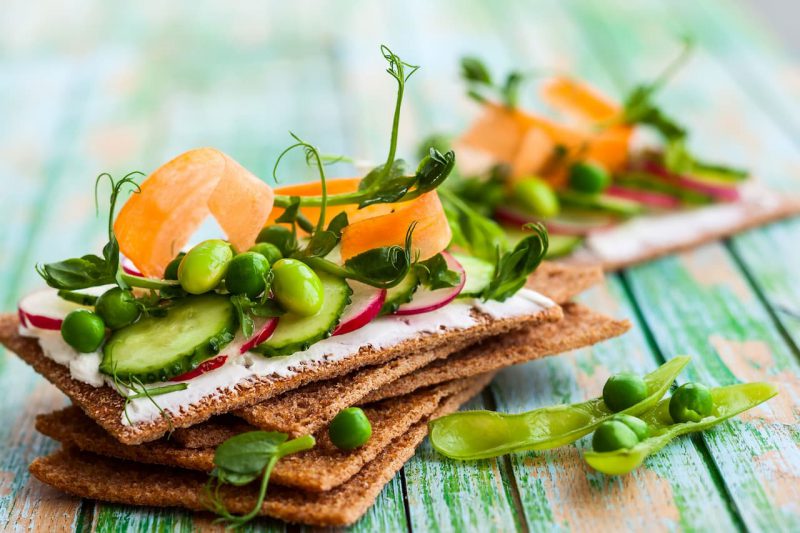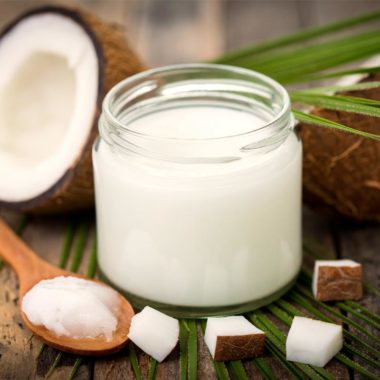Neither brand new nor completely revolutionary, the Clean Eating trend sounds like something positive that comes naturally and brings wellbeing. Eating a “healthy” and balanced diet by following a few principles, you say? Yes, we’ll take it – with gusto!
What is the definition of Clean Eating? Taken literally, the expression is not strictly accurate… But it’s perfect to get us thinking and draw us into a virtuous movement that sets out the rules of a healthy diet. In summary, clean eating is primarily about shunning processed foods and instead favouring whole foods that are free of additives and as fresh as possible. It’s a kind of back-to-our-roots approach, a return to farmers’ lore, illuminated by our current knowledge around health and nutrition.
The origins of Clean Eating
It’s impossible to understand this trend without mentioning one woman, Tosca Reno. She did not invent the fundamentals of this diet (the healthy diet already clearly advocated in the US to stay in good health back in the 1960s). However, she did coin the phrase and claimed its principles as hers.
At first, it was a weight issue
Tosca, born in 1959, had a turbulent and inspiring life journey that she calls “an anti-fairytale”. Born in Canada into an immigrant family from the Netherlands, as one of four girls, Tosca went on to have a weight problem. A few years later, by that time married and a mother to three daughters, at the age of almost 40 she decided to get divorced and take charge of her life (and her body). She could no longer stand either of them. She then embarked on a course of study, became a teacher and met her mentor, Robert Kennedy, who by “chance” was the publisher of an array of fitness magazines. Guided by Robert’s tenets, Tosca set off on a long personal journey combining weight loss, weight training and… Healthy eating. More than a diet, this completely revisited way of eating became symbolic of her resilience and transformation.
Then, a real movement

A few years later, faced with more upheaval in her private life, Tosca took it further. She rounded out her healthy lifestyle based on sport and nutrition with a spiritual dimension. She then officially launched her Clean Eating movement, imbued with all of the lessons that she had learned, tried out and assimilated. In 2010, she decided to pass them on and began publishing some ten books including the infamous Clean Eating bible, The Eat-Clean Diet, in 2007. The fundamentals were in place… These days, Clean Eating is fronted by other figureheads like Gwyneth Paltrow, the author of the successful book The Clean Plate: Eat, Reset, Heal. In the book, as well as her pieces of advice on Clean Eating, Gwyneth compiles diet plans around flagship themes like heart health, thrush, ayurveda and more. To swing into action, she includes “clean” recipes for soups, smoothies, main courses, snacks and desserts.
The 14 principles of Clean Eating
As with any diet, even if in the case of Clean Eating it’s more of an approach to eating, there are fundamentals to adhere to.
- Fatty acids. Choose your added fats carefully to avoid saturated fats in fried foods, margarine and even butter. Plant-based oils (walnut, coconut, camelina or linseed), when drizzled over vegetables or fish, bring a wealth of good fats with them. Choose carefully when it comes to olive or rapeseed oils, as they may be processed which shifts them over into the category of non-clean foods.
- Organic. Favour organic foods as much as possible. Meeting precise criteria, organic foods are guaranteed free of chemical fertilisers, GMOs and pesticides. Since organic goes hand in hand with green, it’s entirely logical that clean eaters stand up for foods produced locally, in an environmentally-responsible way, ethical, fairtrade and with packaging that has the least negative impact on the environment. This applies as much to fruit and vegetables as it does to animal protein (favouring fish and white meat, which lead to less acidity in the human body).
- Breakfast. Breakfast is one of the pillars on which Clean Eating rests. It is even considered one of the fundamental meals, a kind of cornerstone of the whole healthy eating pyramid. Breakfast supplies the engine with fuel for the whole day, and allows the metabolism to start and sustain action and thought.
- Cereals. They must be wholegrain to make the Clean Eating list! To identify them, refer to the flour type digit. It quantifies the proportion of debris in flour, known as ash. In France, the scale goes from 45 to 150. The lower the digit, the whiter and more refined the flour. The bran and germ, which are highly nutritious, have been eliminated. The opposite is true of wholegrain flour, whereby everything is retained (bran, endosperm, germ, dietary fibre, B vitamins, proteins and minerals that are particularly beneficial when it comes to colon cancer prevention). The Clean Eating movement recommends baking your own bread at home, so that you can choose the flour, determine the amount of salt added and, most importantly, leave additives out. Wholegrain cereals promote healthy intestinal flora and reduce excess abdominal fat.
- Colours. Although they bring joy to the Clean Eating table, most importantly they guarantee a varied diet and hence a higher intake of vitamins and nutrients. For example, by adding fresh herbs like chives (green) and a spice like curcuma (yellow) to cauliflower (white), you are already contributing three colours and delivering three different nutrients.
- Cooking. It conditions the preservation of food’s nutritional value. Cook it at too high a temperature, for too long or in too much water, and the nutrients degenerate. Top tip: whenever you boil vegetables, use the cooking water as a base for a sauce, or add it to a soup or stock to retrieve the lost nutrients.
- Water. Essential, fundamental, it keeps all of the organs working, keeps things moving through the digestive tract and keeps communication going between cells, most importantly without additives to scramble the messages. Tea, herbal infusions and a little coffee without sugar can add to the required amount of water, but by no means take its place. Clean Food devotees advise drinking lots of water, even advocating drinking up to two or three litres per day… Of course, alcohol is to be avoided as it is high in sugar and empty calories, an inflammatory agent, and causes liver and cardiovascular disorders.
- Labels. Get into the habit of reading them, and most importantly, decoding them. Hunt down artificial colours, additives, sugar (even in savoury foods) and salt (even in sweet foods)!
- Meal-splitting. Depart from the basic three meals a day and add in snacks (one in the morning and one in the afternoon) to rein in energy slumps that encourage you to raid the cupboards for anything hanging around as a pick-me-up. Clean Eating devotees eat up to six meals a day.
- Home cooking. Cook your own food from scratch, and get into the habit of taking a packed lunch if you work outside the home. Draw inspiration from batch cooking, a routine that consists of preparing a week’s worth of meals in one day. If you don’t like the idea of spending a whole day cooking 6 or 7 meals, at the very least cook staples that will save you time when putting your meal plans together: rice, quinoa or lentils. They can be stored in the fridge, but for no more than three days. Prepare vegetables and fresh herbs so that they are ready to eat (peeled, washed and dried-off salad vegetables stored in a storage container in the fridge, with a sheet of kitchen roll to absorb excess moisture). Prepare a few hard-boiled eggs. Take it further with a chicken which, once cooked, can form the basis of several meals, and even a delicious stock along with the carcass. Basically, embrace the habits of previous generations who had making use of leftovers down to a fine art.
- Pleasure. Tosca Reno, who has tried a number of holistic approaches and therapies, stresses that pleasure is a non-negotiable part of any “diet”. It awakens the senses and promotes excellent nutrient assimilation.
- Satiety. By getting back to notions of satiety and hunger, you listen to your body, its sensations, cravings and the pleasure derived from eating particular foods. Connected to this notion of pleasure is mindful eating, chewing slowly and taking your time to savour each meal or snack.
- Salt. Aim for the least added salt possible, as whole foods already contain naturally-occurring sodium. To season your meals, opt instead for fresh herbs and spices.
- Sugar. Go without, obviously! Or keep your intake as low as possible. Better still, opt for a sugar substitute: honey, agave syrup, coconut sugar or dried apple powder. Whatever you do, don’t use artificial sweeteners, which are a real lure for the brain. It perceives the sweet taste without registering calories and so craves it more and more.
The healthy foods of clean eating

When it comes to healthy eating, the list of food groups is long:
- Wholegrain cereals: brown rice, oats and pseudocereals such as quinoa
- Water or lemon water
- Fresh fruit and vegetables
- High-quality plant-based oils: first-pressed olive oil, coconut oil, rapeseed oil, hemp oil and camelina oil
- Pulses: dried beans, lentils
- Oilseeds: linseeds, pumpkin seeds, walnuts, almonds, hazelnuts and Brazil nuts
- Organic fish and meat
- Dairy products
- Superfoods: matcha, maca, goji berries… Which are met with objections from other food trend movements due to some of them being sourced from far away
- Unsweetened tea and coffee
- Alternatives to sugar: honey, powdered coconut sugar
The forbidden foods of Clean Eating
That means all foods that are processed and stuffed full of additives (like artificial colours, flavourings and sweeteners). At the very least foods must be very lightly processed, therefore as close as possible to their producer and area of origin, so as to avoid lots of processing stages.
To be avoided:
- Alcohol
- Sweetened drinks: carbonated drinks, mass-produced sweetened fruit juices, even those referred to as “natural”
- White cereals made with very refined white flour
- Fast food and junk food
- Hydrogenated fats: oil for frying, margarine
- Ready meals
- Sugar
The advantages of Clean Eating

First of all, clean eating is quite easy. It’s about eating healthily (good fats, fruit and vegetables) and preventing most metabolic diseases (like diabetes), autoimmune diseases (cancer) and cardiovascular diseases. It’s also about feeling less tired. On top of that it’s about the emunctory organs (which allow toxins to be eliminated) working optimally, leaving the skin healthier and looking better! Since Clean Eating does not shun animal protein, it helps to form and sustain high-quality musculature. This is essential for the exercise regime advocated by Tosca Reno, the inventor of this method. As a collateral bonus you get closer to the weight at which you feel good, and which perfectly matches your metabolism, more easily. Again, you don’t embrace healthy or clean eating to lose weight… But to get in synch with your body and the right weight for you. Lastly, since sugar (or quitting sugar, to be exact) is central to this method, the risk of being overweight decreases along with that of developing an array of disorders “fuelled” by sugar, like premature ageing. The Clean Eating approach is flexible, suggesting that you to follow the 80/20 rule. This means total adherence to the rules 80% of the time, with a few indiscretions the remaining 20% of the time. These are quickly offset by the structure of the healthy, balanced diet involved in this method.
The drawbacks of Clean Eating
Inevitably, there are some. Although healthy eating is glaringly logical, embracing Clean Eating can require some effort, and even entail some inconvenience. But on balance, in terms of the benefit / risk ratio, the choice is not a difficult one to make! Yes, home cooking is certainly more time-consuming than just taking a ready meal out of the fridge, freezer or kitchen cupboard. Detractors of Clean Eating put forward the economic argument that eating organic, local, healthy, whole foods is expensive. But think about it this way… A ready meal that is full of salt (which makes everything heavier by binding itself to water), high in empty calories and sugar, promotes hunger pangs and snacking… Which, ultimately, is expensive. The five to six meals a day can become a bind if they don’t suit your lifestyle or metabolism. Lastly, like any “principle” or model, if you want to adhere to it scrupulously, a black-and-white, good/bad mindset can set in. And if it arouses or triggers fears in you, this can lead to eating disorders – which are precisely what should be avoided.
Clean Eating is more than a trend, which would be susceptible to go out of fashion. It’s a way of respecting your body by giving it all the healthy nutrients it needs to keep it working, with a view to preventing diseases related to a poor diet.
Eating a healthy, balanced diet is also one of the pillars on which self-care rests, as advocated by Tosca Reno. Alongside physical exercise and various wellness practices, it forms a virtuous circle to bring harmony within your reach.











1 comments
It is in point of fact a nice and useful piece of
info.
I am glad that you just shared this useful info with us.
Please stay us up to date like this.
Thank you for sharing.